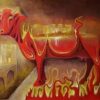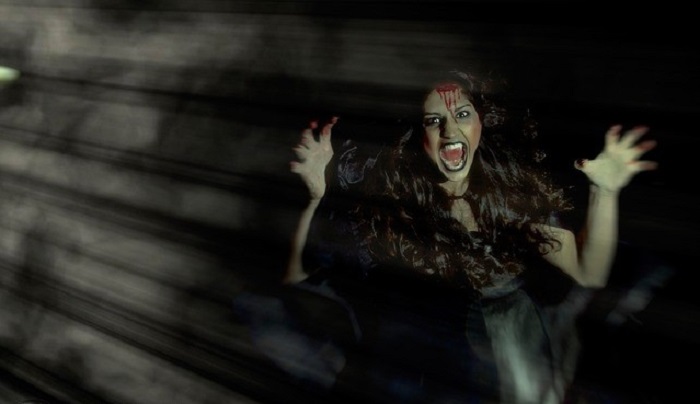Imagine taking one of those genealogy tests which are so popular these days and finding out you’re a descendant of a vampire. You would undoubtedly deny it (or perhaps be proud of it) and seek to prove your point either way with a DNA test … only to find that your DNA matches up to the vampire. If your name is Barber and you have ancestors in New England, you may want to take notes and wear some extra sunblock at the beach this summer because researchers have identified a man buried as a vampire in 19th century Connecticut.
In 1990, an abandoned cemetery was found in Griswold, Connecticut. Researchers determined it to be the private cemetery of the Walton family, which owned and farmed the land from 1690 into at least the 1800s. The remains of 29 individuals were found – men, women and children – and most showed evidence of lives of hard labor. However, one stone-lined grave caught the attention of Paul S. Sledzik and Nicholas Bellantoni, who were doing research for their paper “Bioarcheological and Biocultural Evidence for the New England Vampire Folk Belief,” which was eventually published in The American Journal of Physical Anthropology. Why?
“Upon opening the grave, the skull and femora were found in a “skull and crossbones” orientation on top of the ribs and vertabrae, which were also found in disarray. On the coffin lid, an arrangement of tacks spelled the initials “JB-55”, presumably the initials and age at death of this individual.”

In their study of New England vampire beliefs, Sledzik and Bellantoni found that the descriptions of alleged vampires generally say that the person was wasting away and losing flesh despite leading an active and otherwise normal life. This led to the belief that vampires craved food and ultimately human flesh, which is why relatives of vampires seemed to eventually suffer from the same wasting away. These are also the symptoms of tuberculosis, which was called consumption in those days and ran rampant throughout the unsanitary farms of 18th and 19th century New England. While most cemeteries of that era showed many people suffering from and dying from consumption, only JB-55 had it in the Walton cemetery.
“Several years after the burial, one or more of his family members contracted tuberculosis. They attributed their disease to the fact that J.B. had returned from the dead to “feed” upon them. To stop the progress of their disease, the body of the consumptive J.B. was exhumed so that the heart could be burned. Upon opening the grave, the family saw that the heart had decomposed. With no heart to burn, the bones of the chest were disrupted and the skull femora placed in a “skull and crossbones” position.”
According to the paper, the New England way of dealing with suspected vampires was to burn their heart, especially if blood was found in it. In this case, the heart had decomposed, so instead the family rearranged the bones into a skull-and-crossbones formation – the next best thing since decapitation was also a way of keeping a vampire in its grave.
The case of JB-55 intrigued Charla Marshall, a forensic scientist with SNA International in Alexandria, Virginia, who participated in the DNA and geneaology analyses to identify JB-55. In a presentation given recently at the National Museum of Health and Medicine in Silver Spring, Maryland, the findings of Marshall and experts at the Armed Forces Medical Examiner System’s DNA laboratory in Dover, Delaware, were revealed.
“When modern tools were used – Y-chromosomal DNA profiling and surname prediction via genealogy data available on the Internet – the experts said they came up with a match for the last name: Barber.”

Barber! That made it easy for the forensic experts to check old cemetery and newspaper records. As the Washington Post reports:
“They discovered a newspaper notice mentioning the death there in 1826 of a 12-year-old boy named Nathan Barber, whose father was a John Barber. Researchers had found a grave near JB’s containing a coffin with the notation NB 13 similarly tacked on the lid.”
SO, JB-55 was not a vampire but a poor farmer and father named John Barber who lost his 12-year-old son and eventually wasted away from tuberculosis, only to be later suspected of vampirically rising from the grave and attacking his own relatives before they dispatched him forever by detaching his skull and rearranging his bones.
All you New England Barbers out there — you don’t do things like that anymore, right? RIGHT?
Source: Mysterious Universe




















